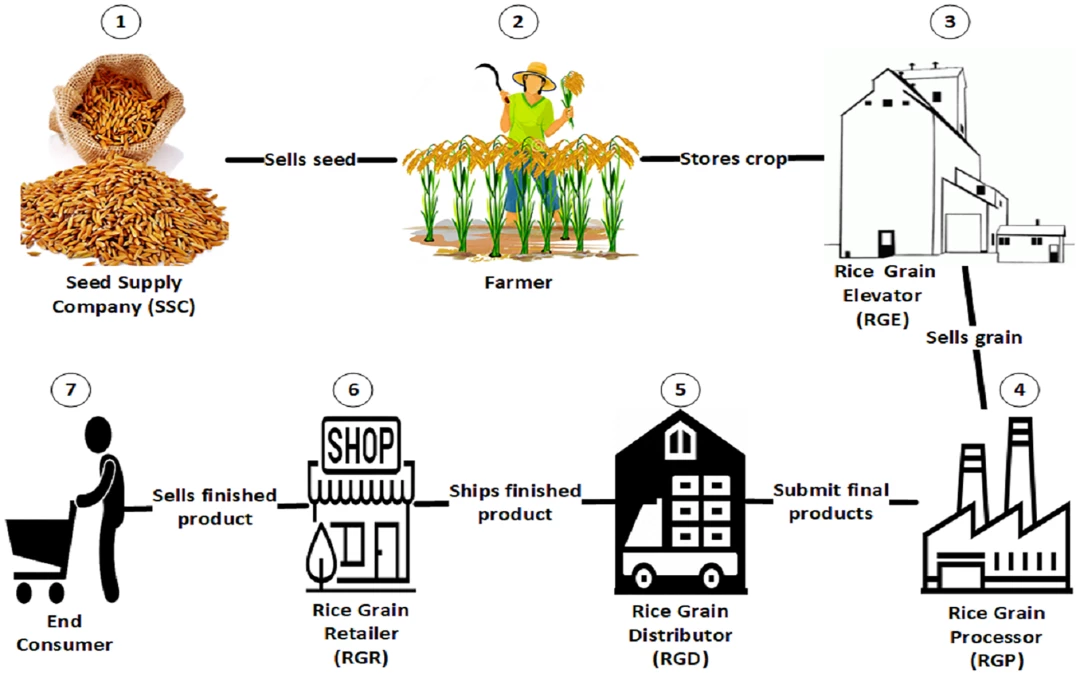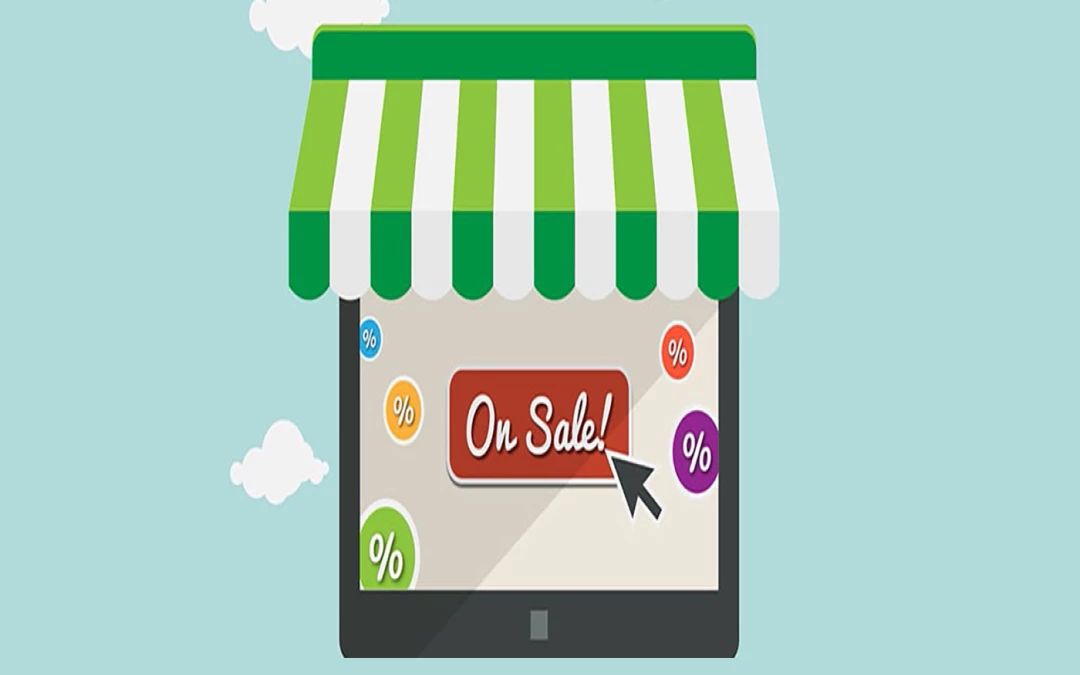Both an environmentally friendly method of crop production and an environmentally friendly method of crop distribution and supply chain management are necessary components of the agricultural industry. Blockchain Technology can ensure this desired level of efficiency. Read more about "what is a blockchain simplified" at Multibank.io.
It is a complex process to meet the expanding demand for food that comes from a population that is only going to keep growing. It involves a complex supply chain that connects the providers of valuable resources (transporters), crop producers (farmers), merchants, and end-users. The smooth operation of such a complex system is often hindered by the presence of a great deal of paperwork and administrative difficulties.
Historically, such logistical responsibilities have been handled using documentation that is based on paper. However, with the advent of expertise came the transition of documentation to computer systems, which made the responsibility simpler as well as more efficient.
Supply Chain System Benefits from Blockchain Technology's Optimization
The next phase for blockchain technology is to make the administration of supply chains in industries such as agriculture and meals more environment-friendly and straightforward to handle. By using Blockchain technology, tamper-proof and accurate facts relating to the farms, stock, credit ratings, and food monitoring may be generated.
According to the opinions of business advisors and crypto exchanges like Coinbase or Multibank.io, the blockchain's presence in the sector of agricultural and food production is still expanding. Expanded research and development efforts are helping to bring blockchain technology to the next level. In addition to retailers and food manufacturers and distributors, the food retail industry is also increasing its use of blockchain technology.
Checkout: use a credit card to buy crypto
As per a market analysis conducted by BIS Research, the value of the global blockchain market in the agricultural and food business in 2020 was estimated to be $139.6 million. The global blockchain market is expected to grow at a compound annual growth rate of 51 percent and reach $1.48 billion by the year 2026. The expansion of the market will be pushed forward in the not-too-distant future by several factors, including a raised need for openness within the food supply chain and measures supported by the government.
Management of the Supply Chain Within the Agriculture & Food Industries
The term "agriculture supply chain" refers to the logistical network that links the farmers who produce agricultural goods with the consumers who buy those goods. This course is carried out with the participation of quite a lot of stakeholders, which include source providers, farmers, distributors, and wholesalers. As a result, an interaction between all the relevant parties that is respectful of the natural environment is essential to ensure the smooth operation of the food and agricultural industries.
There are a lot of people working together to complete a variety of conflicting duties, and there are a lot of resources and information flowing around. Because of this, the operations throughout the supply chain are made more complicated. The fragmented and incomplete flow of data that is coming in might make the technique more complicated and increase the issues that are present inside the agricultural supply chain system.
The following are the three stages that comprise a standard agricultural supply chain:
- STAGE 1 - Farmers to intermediate silos
- STAGE 2 - Intermediate silos to transformation services
- STAGE 3 - Transformation services to consumers who buy the transformed vegetation.
When it comes to the management of the supply chain, it is crucial to figure out how to have an easy connection with all the parties involved. When two parties engage in a war of curiosity with one another or fail to communicate effectively, it may often result in large losses for all the people who are involved in the trading of goods.
Therefore, to retain a simple flow of supplies, currency, and data, a transparent and decentralized medium such as blockchain gives the most effective response to the problems that are occurring within the current system for the management of supply chains.
How can better supply chain management be achieved via the use of blockchain technology in the agriculture and food industries?
The implementation of blockchain technology into the agricultural supply chain has the potential to completely transform how data is transferred between different parties. Blockchain technologies are used to create distributed databases that are shared across the many nodes of a computer community. These databases store information digitally and electronically. Blockchain technology enables the safe and transparent storing of information.
There are a variety of applications for blockchain technology in the food and agricultural industries. When combined with the internet of things (IoT) and data analytics, blockchain has the potential to create a shared standard for every player in the supply chain to record and exchange information at every step of the journey of the commodity.
A strategy like this one will make it possible for all the relevant parties to have access to pertinent and accurate information, improve both efficiency and income, and continue to maintain both sustainability and transparency about the consumers and the government.
Conscientious consumers of today have an interest in the specifics of the origin and quality of the food they consume, and they want to know more about it. Because of this, there is a growing need for the establishment of a reliable supply chain that maintains a high standard of food quality.
On the other hand, clients desire digital services that are customized to meet the requirements of their specific situations. The use of blockchain technology in agricultural practices and software for farm management not only increases the financial viability of farming operations but also satisfies the need for food that comes with a growing population.
Increased food production may be accomplished with the assistance of cutting-edge agricultural technologies including precision farming, farmland mapping, Internet of Things sensors, and vertical farming methods. In addition, geographic information systems, crop management software, and transportation technologies are prime examples of how technological advancements enable agricultural businesses to achieve improved results in terms of food production and supply chain management.
Higher consumption of meals results in additional difficulties, comparable to those posed by the availability of alternative meals in the market.
As a result, it poses a risk to agricultural food supply systems at a variety of different ranges. Farmers and consumers are now facing a barrier that may be attributed to a lack of transparency and inefficiencies within the system. The use of blockchain technology in the agricultural supply chain, on the other hand, has the potential to empower all market players by facilitating the formation of trustworthy relationships.
The Agriculture and Food Industries Have Their Own Supply Chain Management Best Practices
The supply chain management system may achieve higher levels of both productivity and efficiency with the use of cutting-edge technologies such as blockchain. Nevertheless, shifting away from the time-honoured practice and toward the innovative strategy is not without its difficulties.
Despite this, there are a few key behaviours that, independent of the system's mode of exchange, may assure regularity and the smooth running of the system. A few examples of such excellent practices are as follows:
- Utilizing blockchain technology is a step toward improving the quality and safety of food production.
It is necessary to ensure the quality and safety of food to keep the confidence of final customers. Contamination of food and food fraud are two of the most pressing issues facing the industry today, which have an impact on companies.
Any participant in the system of the supply chain will be aware of precisely who is transporting the food goods as the consumer population becomes more aware of and careful about what they are eating. Information about the location of storage and transportation is easily accessible.
- Establish protocols to guarantee frequent audits
Establish procedures to guarantee that frequent audits are conducted at the facilities as well as the warehouses of the carrier and the supplier. These records get rid of inefficiencies and difficulties that were hindering the supply chain process from becoming more efficient.
In addition, conducting regular audits may be a useful technique for ensuring compliance and improving the reputation of the business.
- A meticulous monitoring system in its entirety
To monitor the movement of food through each stage of the distribution chain, a complete monitoring system is required. Before they are allowed to bring any goods into the country, importers are required by law to provide the FDA with a list of relevant information.
This comprises IDs, code numbers, and any additional data that may be required. Compliance with FDA regulations may be ensured by proper labelling and supervision, which will also assist manufacturers in preventing the spread of diseases or foodborne illnesses.
- Employing a computerized system for automated identification
The usage of automated identification systems is crucial for stakeholders to employ to monitor the whole process, beginning with farming and ending with customers purchasing food from grocery stores. RFID transponders, for instance, make it possible to monitor and track livestock as well as deliveries, purchases, and other components of the supply chain.
In addition, the participants in the supply chain may use the information provided by these monitoring technologies to locate sources of defective food or get real-time data on the status of food safety checks.
Food spoilage and wastage across the system has the potential to be reduced with Blockchain Technology.
Thanks to technological advancements (the farm), workers are now able to do temperature checks and environmental evaluations on food using data collected from its genesis point. Workers make it their responsibility to always monitor and maintain the supply chain’s safety conditions.
The vigilant surveillance of food safety conditions helps to guarantee the avoidance of any occurrences involving the rotting or waste of food, which in turn boosts the reputation of the firm among its clientele.
To Sum Up
The use of blockchain technology has provided the food and agricultural industries with a platform that is both secure and open to scrutiny. At this point in time, transparency is an important component of customer pleasure. In addition, participants in the agricultural supply chain have started to recognise the enormous potential of the technology as blockchain is being more widely used in this process.
The increasing need for openness and traceability across supply chains makes the introduction of blockchain technology very relevant. Another reason for the importance of blockchain technology is the growing incidence of food-related outbreaks and diseases caused by consuming contaminated food.
Now let’s have a look at what GTE is in GTE technology you basically trade not with money but instead with digital tokens.
 Admin
Admin

















